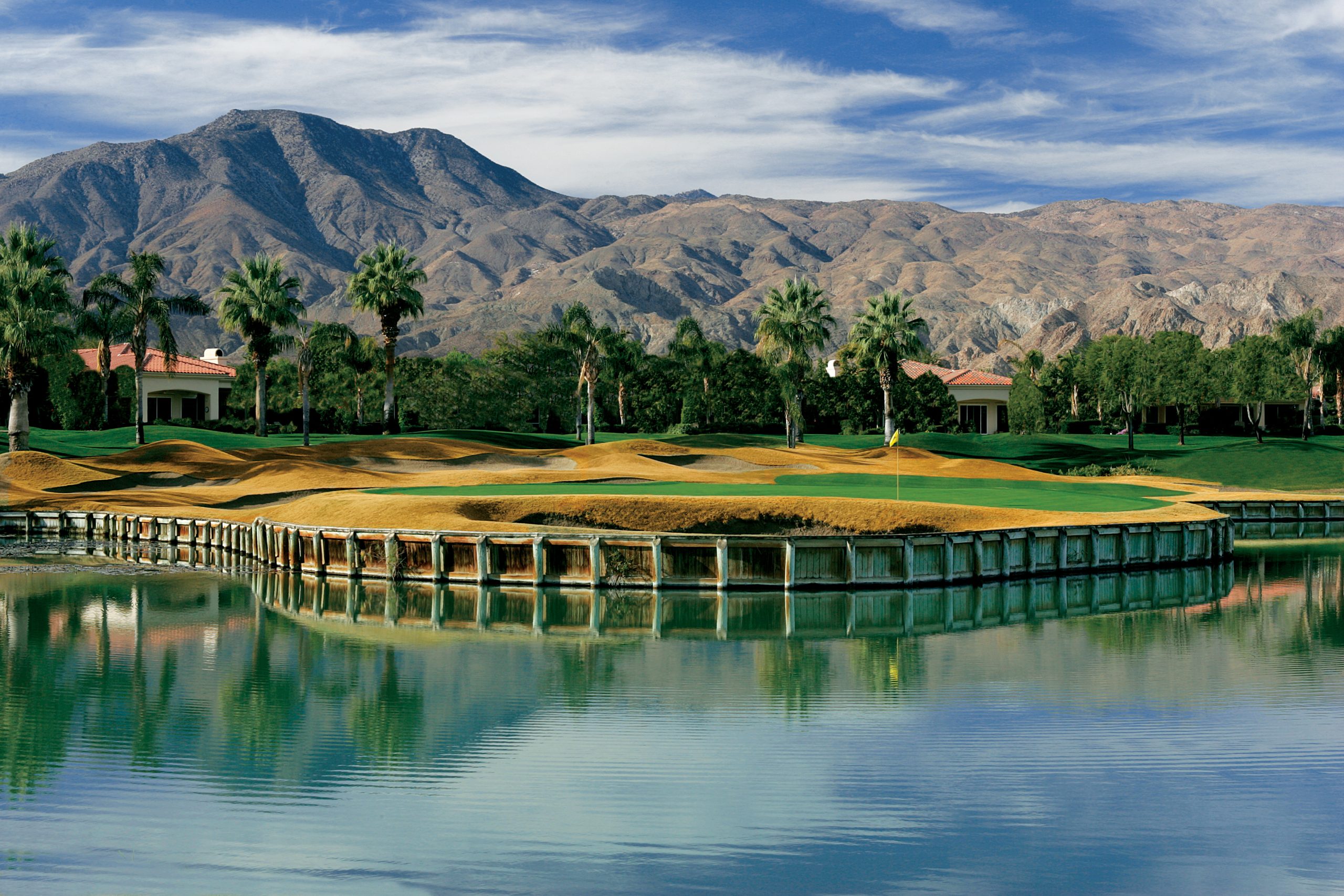The 15 Best Golf Courses in the USA That You Can Play
Golf enthusiasts and casual players alike often dream of teeing off on some of the finest courses in the world, but many don’t realize that exceptional public access golf courses are available across the USA.
Whether you’re seeking the challenge of a renowned championship layout or the serene beauty of a well-kept hidden gem, the U.S. offers a diverse range of options that cater to all skill levels and preferences.
Here we’ll explore some of the best public golf courses you can play right now, showcasing the history, breathtaking views, and memorable experiences that make these courses stand out in the golfing world.
1. Pebble Beach Golf Links (California)
Golfers from around the world visit Pebble Beach to experience its storied greens and stunning landscape, making it the “Mecca” destination for many golf enthusiasts. Located on the Monterey Peninsula, Pebble Beach may come at a high price but many golfers consider it a must and extremely worth it.
The iconic Par 5 6th looks intimidating, due to its blind second shot, but it is actually quite playable. The course offers impeccable views of the Pacific Ocean on holes 7, the famed Par 3, and 18 that you won’t want to miss. Outside of golf, Pebble Beach offers world-renowned accommodations.
Opened: 1919
Par: 72
Length: 7,075 yards
Designers include: Jack Neville (1919), Douglas Grant (1919), H. Chandler Egan (1929), Alister MacKenzie (1929), Harold Sampson, Herbert Fowler, Robert Hunter (1927), Jack Nicklaus (1998), Arnold Palmer, Seth Raynor, Thomas Pearson
Difficulty: Slope 144 / Rating 74.9
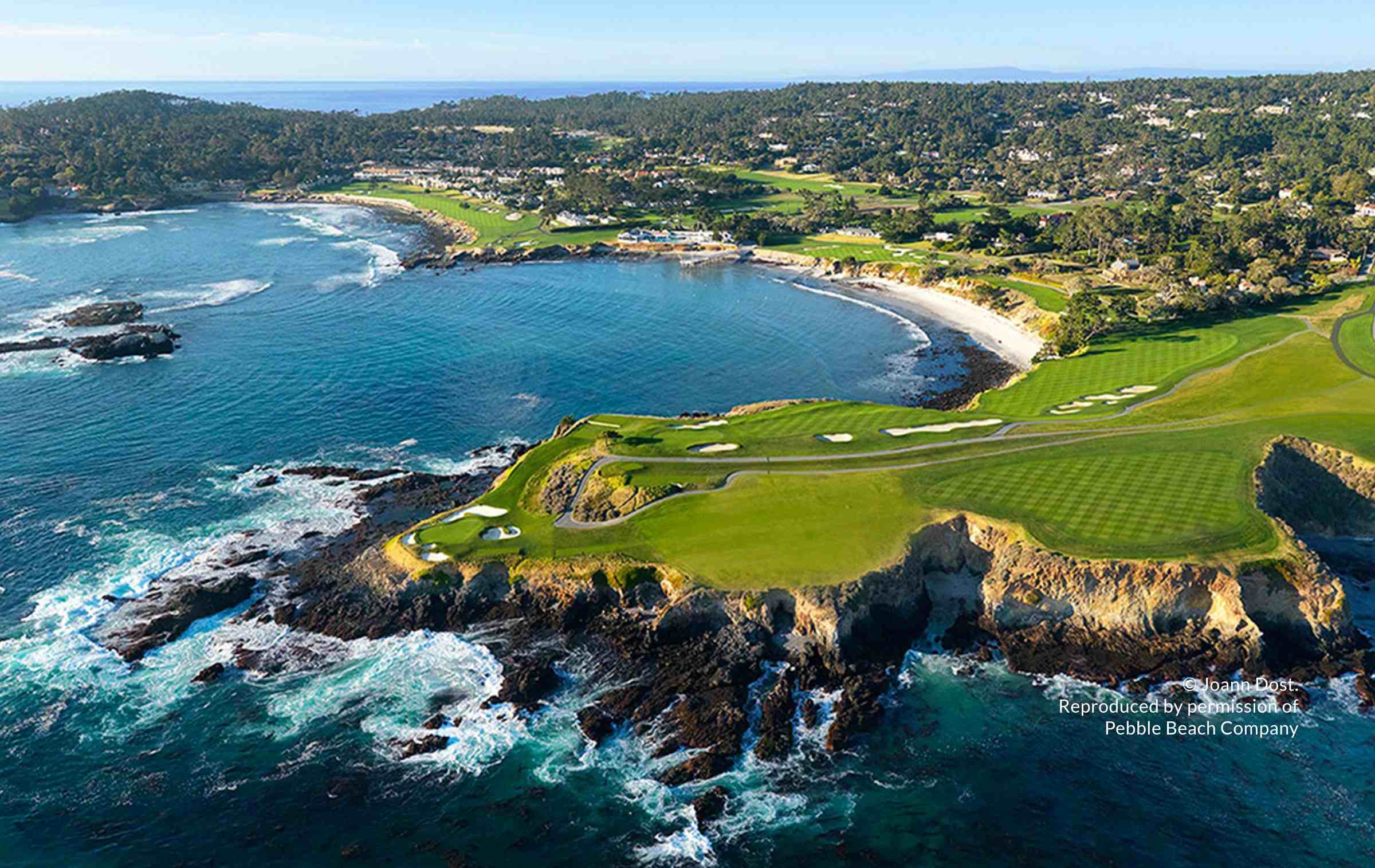
2. TPC Sawgrass – The Players Stadium Course (Florida)
Located on the beautiful Ponte Vedra beach, The Players Stadium Course at TPC Sawgrass provides a very challenging test for all golfers. No two consecutive holes play in the same direction and the greens call for very precise shot making.
All golfers know of the infamous Par 3 17th, nicknamed the “Island Green”. Don’t let the short length fool you, this is no easy feat! TPC Sawgrass is also known as host of the annual The Players Championship which many consider the “fifth major”.
Opened: 1981
Par: 72
Length: 7,245 yards
Designers include: Pete Dye (1981), Tommy Cushnahan, Alice Dye (1981), MacCurrach Golf
Difficulty: Slope 155 / Rating 76.4
3. Kiawah Island – Ocean Course (South Carolina)
Located right on the beautiful coast of South Carolina, the Ocean Course at Kiawah Island is on every golfer’s bucket list.
The lengthy par-3 17th features a narrow green protected by water on the right and two deep bunkers on the left. There’s no room for error here, though the green stretches about 45 yards deep. Even Phil Mickelson, on his way to winning the 2021 PGA Championship, bogeyed this challenging hole during the final round.
Opened: 1991
Par: 72
Length: 7,356 yards
Designers include: Pete Dye (1991), Alice Dye (1991), Chris Lutzke (1991)
Difficulty: Slope 155 / Rating 79.1
4. Bandon Dunes – Pacific Dunes (Oregon)
Tom Doak’s design is known for its minimalist approach, allowing the natural landscape to dictate the course’s character. The layout integrates seamlessly with the surrounding dunes and is often compared to traditional links courses found in Scotland.
Pacific Dunes is short enough to keep you hopeful but rugged enough to challenge every aspect of your game. The par 4 16th offers a fairway with subtle undulations and a plateau green that slopes from front to back, truly a fun hole.
Opened: 2001
Par: 71
Length: 6,633 yards
Designers include: Tom Doak (2001), Jim Urbina, Bruce Hepner (2001)
Difficulty: Slope 145 / Rating 75.9
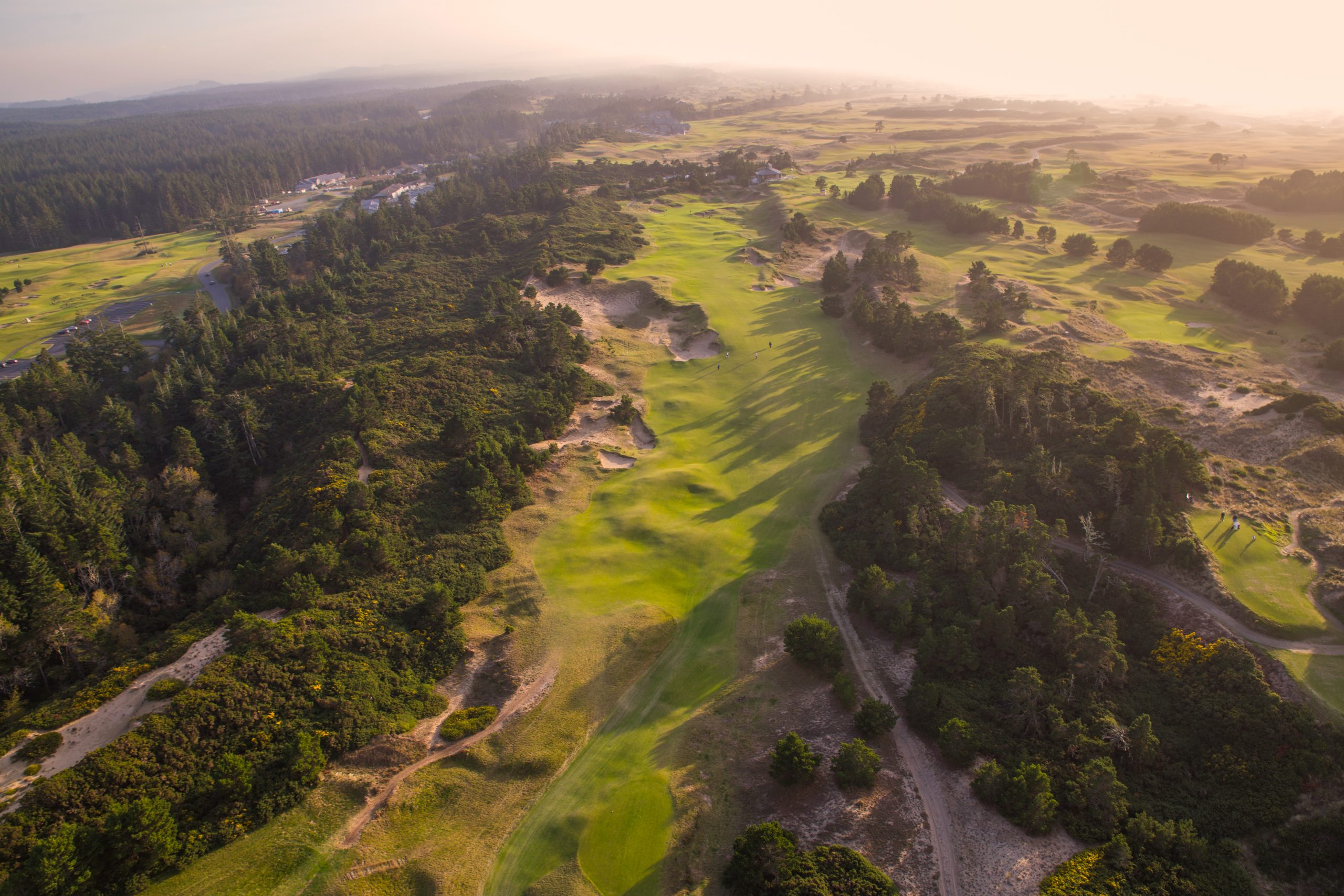
5. Whistling Straits – Straits Golf Course (Wisconsin)
Opened in 1998, Whistling Straits is modeled after the traditional links courses of Ireland and Scotland. The course is characterized by its rugged, windswept terrain, with sandy waste areas, deep bunkers, and expansive vistas. The design incorporates Dye’s signature features, such as visually intimidating hazards and strategic bunkering.
This stunning par 3 runs alongside the Lake Michigan shoreline on the right. The green is safeguarded by a series of sand bunkers to the right and short of the green, while the left side is bordered by a large hillside interspersed with sand bunkers. The long green features subtle undulations, making club selection crucial and presenting a challenging test for putting.
Opened: 1998
Par: 72
Length: 7790 yards
Designers include: Pete Dye (1998), Chris Lutzke (1998)
Difficulty: Slope 152 / Rating 77.2
6. Pinehurst No. 2 (North Carolina)
The Pinehurst No. 2 course is famous for its distinctive turtleback greens, which are heavily contoured and slope from the center to the edges. While the course has undergone several updates, the essential design elements crafted by Donald Ross have been preserved.
Pinehurst No. 2 recently hosted the 2024 U.S. Open where Bryson DeChambeau found his way to the top of the leaderboard and claimed his second U.S. Open victory.
Opened: 1907
Par: 70
Length: 7,588 yards
Designers include: Donald Ross (1907), Ben Crenshaw (2010), Bill Coore (2010), Robert Trent Jones, Sr. (1974), Rees Jones (1996), Rees Jones (2004), George Waters (2011)
Difficulty: Slope 149 / Rating 77.9
7. Bay Hill Club & Lodge – Champion/Challenger Course (Florida)
Bay Hill Club and Lodge features a 27-hole layout with three distinct nine-hole courses named the Champion, Challenger, and Charger. The infamous Arnold Palmer Invitational is held on the Champion and Challenger courses, known for their challenging design.
This demanding track is regarded as one of the toughest on the Tour, particularly due to the two lengthy par threes on the back nine (holes 14 and 17), which have presented difficulties for many prospective champions.
Opened: 1961
Par: 72
Length: 7,381 yards
Designers include: Dick Wilson (1961), Arnold Palmer (2009), Ed Seay (1989), MacCurrach Golf, Thad Layton
Difficulty: Slope 137 / Rating 75.2
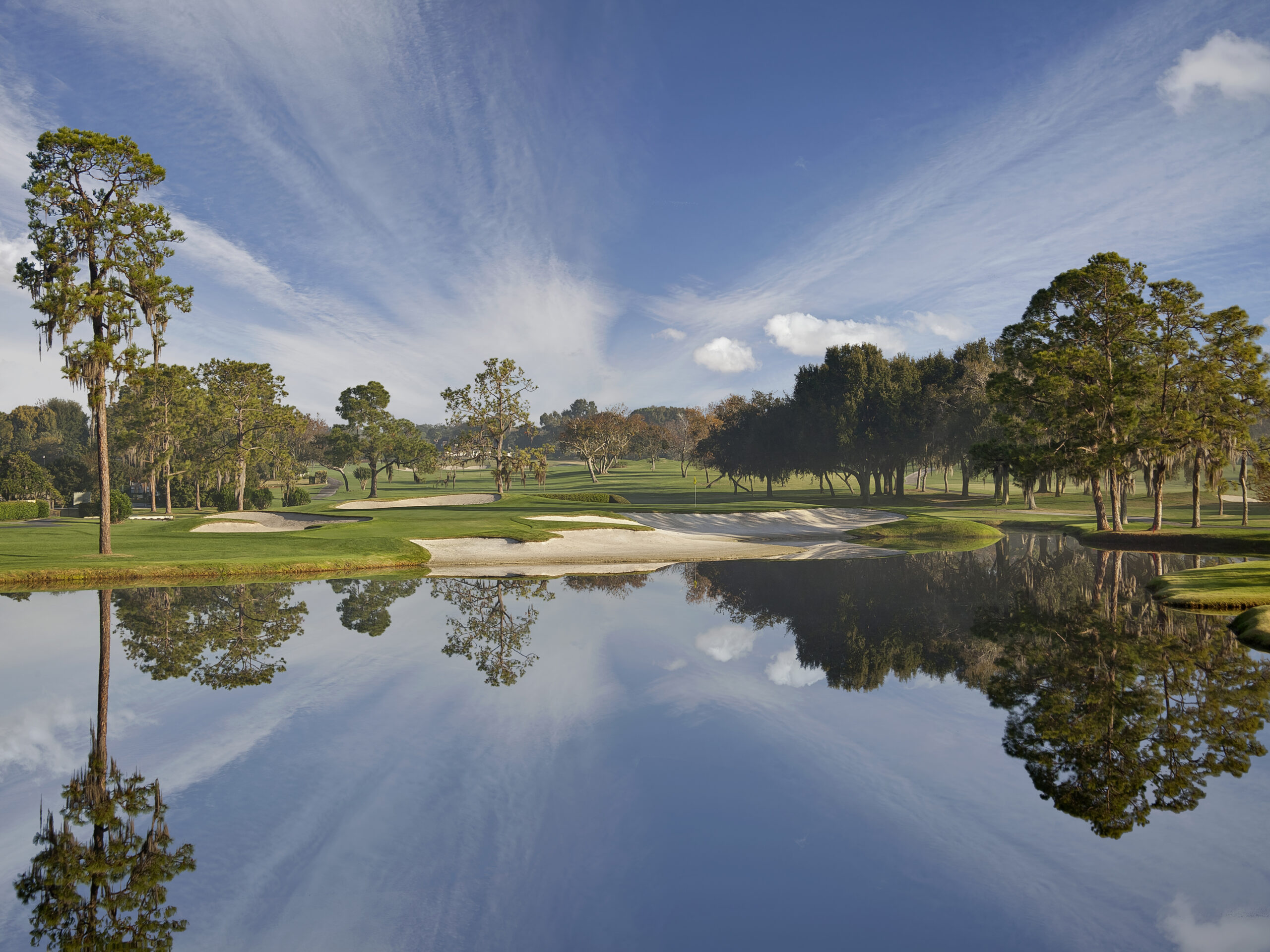
8. Torrey Pines – South Course (California)
The South Course was originally designed by William F. Bell in 1957 and later renovated by Rees Jones in 2001 to modernize the layout and adapt to the demands of contemporary tournament play. Jones’s redesign included lengthening the course and adding strategic bunkering. Make sure to be confident in your club choice because one of the course’s main challenges is the wind coming off the Pacific Ocean.
The Torrey Pines South Course is best known for hosting the annual Farmers Insurance Open, a PGA Tour event that draws a strong field of competitors. It also gained prominence by hosting the 2008 and 2021 U.S. Open Championships, with Tiger Woods winning the 2008 U.S. Open in a dramatic playoff.
Opened: 1957
Par: 72
Length: 7,707 yards
Designers include: William F. Bell (1957), Rees Jones (2001), Greg Muirhead (2001), Rees Jones (2019), David Rainville (1975), Stephen Halsey, Jack Daray, Jr.
Difficulty: Slope 148 / Rating 78.8
9. Hilton Head Island – Harbour Town Golf Links (South Carolina)
Harbour Town Golf Links at Sea Pines Resort is the most famous of Hilton Head Island and the sole PGA Tour venue in South Carolina, offering a true test of golf. Designed by Pete Dye, the course emphasizes shot-making, accuracy, and finesse. Unlike many Tour venues that focus on length, Harbour Town provides a balanced challenge for both long and short hitters.
While the course is renowned for its iconic par 3s, the standout feature is the par 4 18th hole. This hole provides a picturesque Harbour Town Lighthouse, worthy of stopping to take a picture.
Opened: 1969
Par: 71
Length: 7,099 yards
Designers include: Pete Dye (1969), Jack Nicklaus (1969), Alice Dye (1969), MacCurrach Golf
Difficulty: Slope 152 / Rating 75.9
10. Kapalua – Plantation Course (Hawaii)
The Plantation Course, home to the annual Tournament of Champions, is designed with its final hole in mind: a 663-yard downhill par-5 that usually plays downwind. From the elevated tee, you’ll be captivated by breathtaking views of the Pacific Ocean and distant mountain peaks.
The broad fairway slopes downward, encouraging a powerful drive. However, despite the downhill and downwind advantages, only the longest hitters will dare to attempt the hole in two shots, as the approach must clear a chasm that cuts into the right side of the fairway.
Opened: 1991
Par: 73
Length: 7,596 yards
Designers include: Ben Crenshaw (1991), Bill Coore (1991)
Difficulty: Slope 144 / Rating 77.0
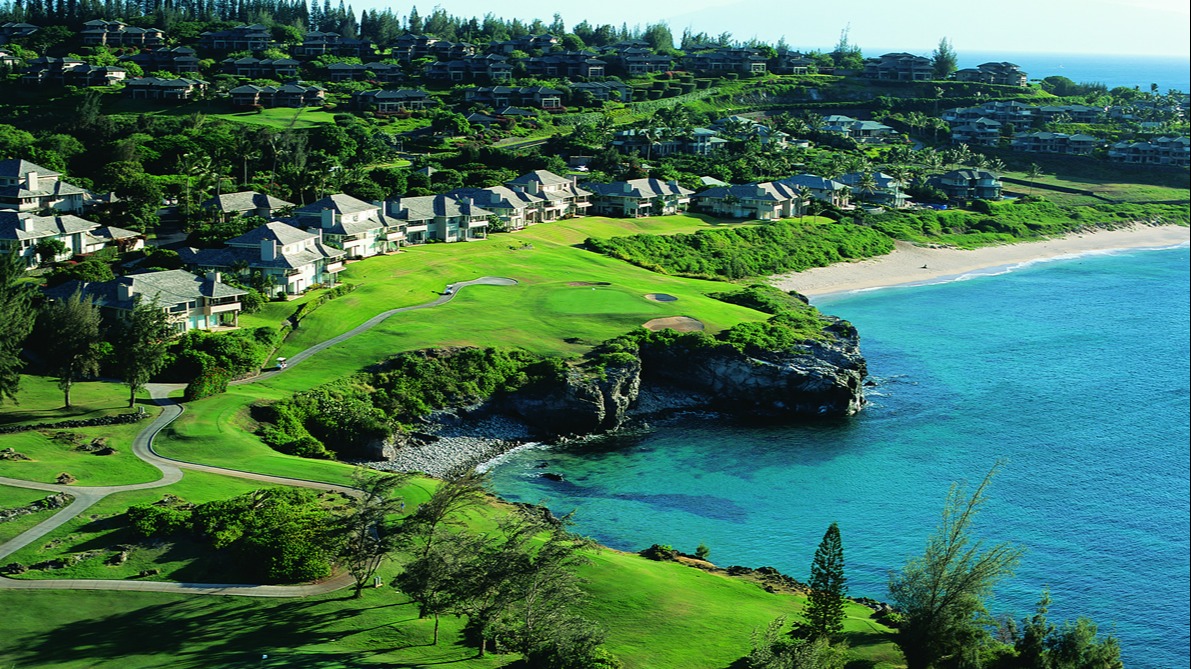
11. Trump National Doral – Blue Monster (Florida)
The Blue Monster at Trump National Doral in Miami, Florida, is one of the most iconic golf courses in the United States. Hosting the Doral Open from 1962 to 2006 and the Cadillac Championship, part of the World Golf Championship, from 2007 to 2016, this course has a rich history.
Redesigned in 2016, it combines historical elements with modern features, offering a challenging test for golfers. The 18th hole, a formidable 473-yard par-4, is renowned for its difficulty and has been recognized as one of the top 100 holes in the world by GOLF Magazine.
Opened: 1962
Par: 72
Length: 7,590 yards
Designers include: Dick Wilson (1962), Raymond Floyd, Gil Hanse (2014)
Difficulty: Sleep 146 / Rating 77.4
12. Sea Island – Seaside Course (Georgia)
Georgia’s Sea Island is a popular destination for golfers nationally. The 421-yard 4th is a really distinctive hole where the tee shot requires a forced carry across wetlands to a fairway that then takes a severe ninety-degree turn left towards a green site on the other side of marshland.
With bunkers on the right side of the fairway, golfers who play too conservatively away from trouble on the left will find themselves punished for their lack of ambition.
Opened: 1929
Par: 70
Length: 6,657 yards
Designers include: H. S. Colt (1929), C. H. Alison (1929), Tom Fazio (1999), Beau Welling (1999)
Difficulty: Slope 139 / Rating 72.4
13. Reynolds Lake Oconee – Great Waters (Georgia)
The course spans over 7,000 yards from the back tees and features a blend of strategic bunkering, water hazards, and varied terrain. Its design incorporates the natural beauty of the lake and surrounding landscape, providing a visually stunning yet demanding golfing experience.
One of the standout features of the Great Waters course is its par-3 17th hole, which plays over a large body of water. Don’t get too distracted by the view though, this hole may be striking in beauty but it is one of the toughest to navigate.
Opened: 1992
Par: 72
Length: 7,436 yards
Designers include: Jack Nicklaus (1992)
Difficulty: Slope 143 / Rating 74.6
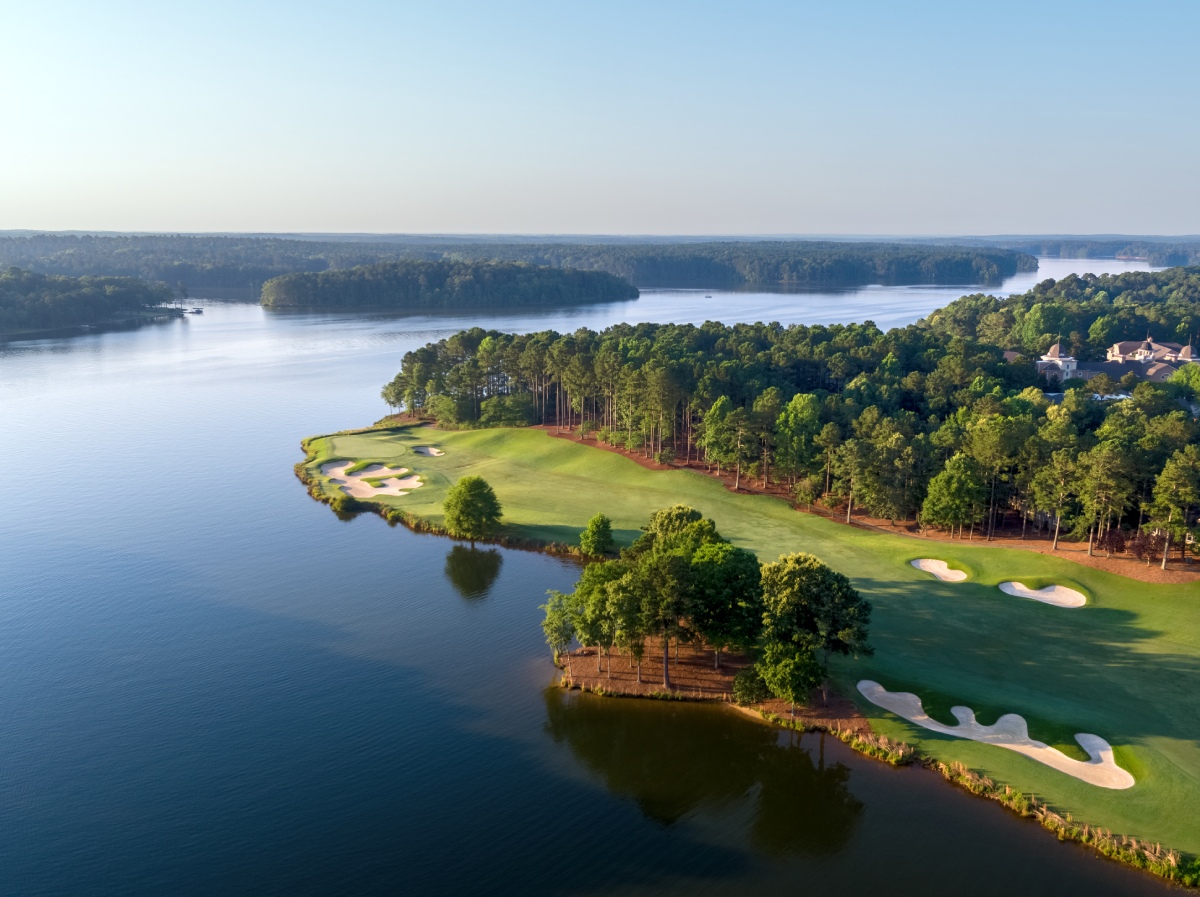
14. La Quinta Resort & Club – The Stadium Course (California)
The Stadium Course stretches to around 7,200 yards from the championship tees and plays as a par-72. Its length, combined with the challenging design, requires both power and precision.
The 17th hole, a par-3 known as “Island Green,” is particularly famous. This hole requires you to strike it over water to a stand-alone green, making it one of the most memorable and daunting holes on the course.
Opened: 1981
Par: 72
Length: 6,578 yards
Designers include: Pete Dye (1981)
Difficulty: Slope 148 / Rating 75.8
15. Bethpage Black (New York)
As one of the most famous public courses in the United States, Bethpage Black is a must-play for golf enthusiasts. Located in Long Island, New York, this course puts up a challenging experience due to its length and reliance on the natural layout presenting undulating greens.
The 2025 Ryder Cup is being held at Bethpage Black and the anticipation is rising as it is the course’s very first time hosting this exciting tournament. Previously, Bethpage Black has hosted the U.S. Open in 2002 and 2009. It also held the PGA Championship in 2019.
Opened: 1936
Par: 71
Length: 7,465 yards
Designers include: Rees Jones (2008), Greg Muirhead (2008), A. W. Tillinghast (1936), Rees Jones (1998)
Difficulty: Slope 155 / Rating 77.5
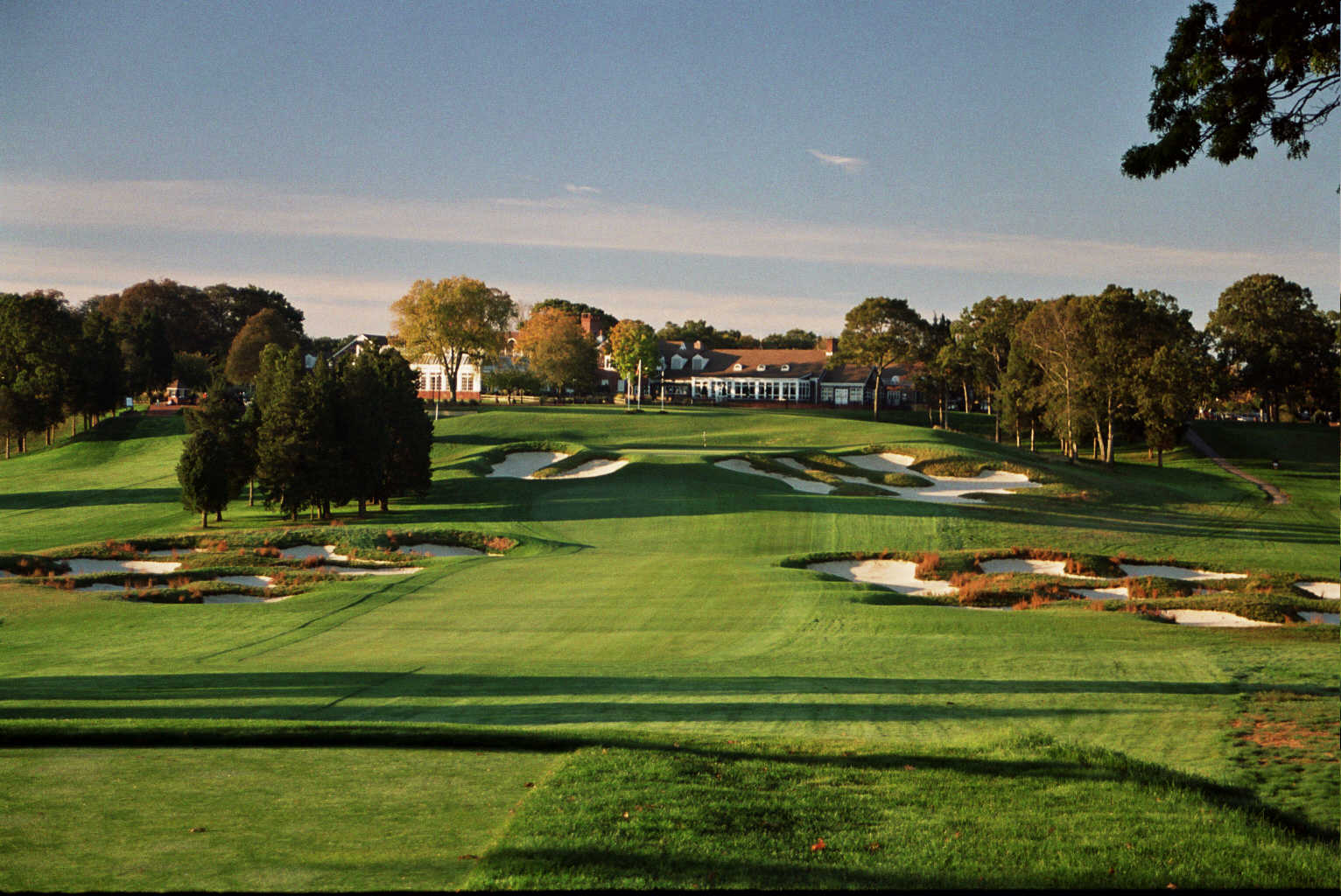
There are over 16,000 golf courses located throughout the United States making it the country with the most courses in the world.
The States in the USA that are most popular for golfing would be California, Wisconsin, Florida, Texas, South Carolina, Arizona, Oregon.
There are 32 PGA courses in the United States with 26 of these courses being playable.
Where is golf played the most in the US?

Meet the Author: Bill Hogan
Bill Hogan is based in Austin, TX and has over 35 years of experience in the luxury golf travel industry.
He has played golf in 57 different countries to date, is a long- time panelist for GOLF Magazine World & USA Top 100 courses, and on the ranking panel for Platinum Clubs of the World.
Share this:

